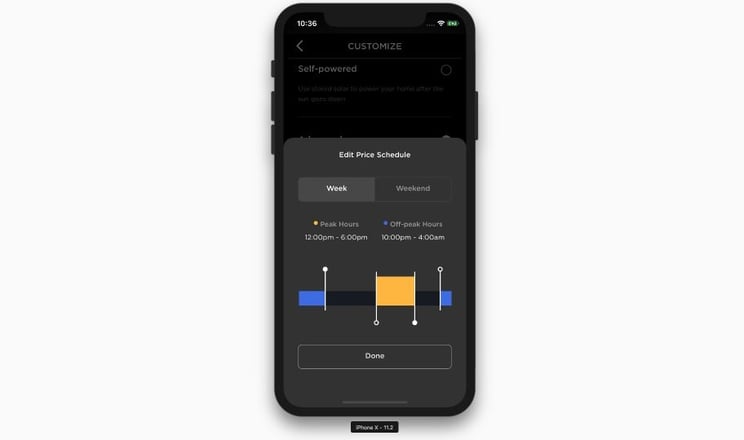Tesla recently confirmed that their eagerly anticipated Time-Based Control feature for Powerwall 2 is being rolled out to existing systems.
We are now able to reveal the functionality available (and to confirm that as expected it's pretty comprehensive)...
Will 2018 be a breakthrough year for Time-of-Use tariffs?
The official arrival of this feature for Powerwall 2 is extremely timely. Tesla has confirmed that the functionality is now available, and being rolled out in batches to existing systems (check your apps!).
There is potential for a proliferation of Time of Use (ToU) tariffs in the coming year. ToU tariffs - coupled with the national roll-out of smart meters - are a response to the changing electricity market, which will increasingly favour those who buy cheap and use peak. Flexible usage is part of the UK's plan to reduce its central peak power generating capacity whilst still keeping the lights on.
Up until recently, in addition to the standard Economy 7/10 tariffs, there has been just the one ToU tariff available - Green Energy UK's pioneering 'TIDE' tariff introduced last January. However, Octopus Energy have recently announced an even more innovative tariff, that will actually pay customers to consume energy at times when there is a surplus of generating capacity! Their 'Agile Octopus' tariff features 'Plunge Pricing' whereby customers are notified via text of upcoming time windows where they will be paid for any electricity consumed (admittedly a rare event - occurring just 4 times in the last 12 months!). The tariff offers truly dynamic half-hourly pricing, tied to wholesale prices and updated daily. The exact sort of tariff smart meters were designed for...
With Octopus claiming potential savings in excess of £200 for the average UK household on their Agile tariff in comparison to an average Big Six variable tariff, it is surely only a matter of time before other energy suppliers will respond by introducing their own ToU tariffs. Especially in light of the growing awareness surrounding battery storage and the potential to make savings through load shifting.
Overview of Powerwall 2 controls
Moving on to Tesla then, who have come up with three modes of operation for Powerwall 2 that will be configurable through the Tesla app (in the Customise tab). They are as follows:
- Self-powered. This mode is purely for solar self-consumption, with no charging from the grid. It will prioritise charging from the solar at all times and discharge whenever it can to maximise self-usage.
- Advanced - Time-based control (Balanced). Balanced mode is the same as self-powered, except you can tell Powerwall the peak and off-peak times for your tariff and the battery will DISCHARGE at peak times in preference to off-peak times to maximise savings. There is still no charging from the grid in this mode.
- Advanced - Time-based control (Cost Saving). Cost-saving mode incorporates charging from the grid at off-peak times where possible to maximise savings, as well as charging from solar during the day.
| Mode | Backup reserve | Solar self usage % | Savings | Who should do this? |
| Self-powered | Configurable (0-100%) | Great! | OK | "I want to minimise my carbon footprint" |
| Advanced - Time-based control (Balanced) | Configurable (0-100%) | Good | Good | "I want to minimise my carbon footprint and I have a ToU tariff" |
| Advanced - Time-based control (Cost-Saving) | Configurable (0-100%) | OK | Great! | "I have a ToU tariff and want to maximise my savings" |
Update on Backup
From the table above you can see that it will be possible to set the level of back-up reserve in each mode for the backup versions of Powerwall 2.We have updated our Powerwall 2 Guide
Download our updated Powerwall 2 guide using the link below (includes remodelled figures for our economic comparison).











